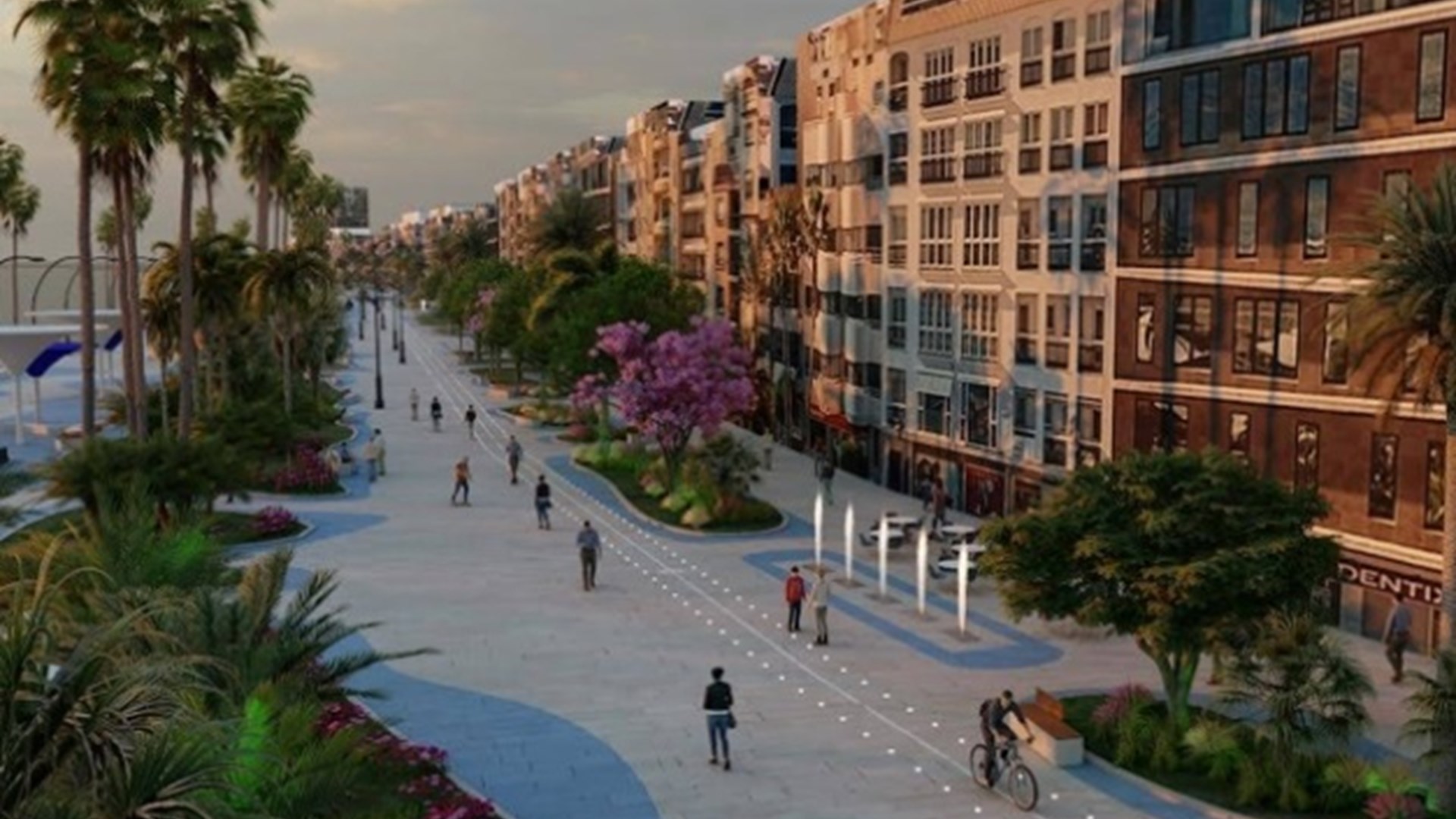This space will be gained for the pedestrian and its functionality will change in favor of a city open to the sea.
The remodeling project of the Avenida de España in Estepona, which currently crosses the city from east to west along the coastal strip, will not only make it possible to gain this space for pedestrians, but will completely change its aesthetics and functionality. The planned actions will specifically affect the section between the Carlos I avenue roundabout and Terraza street, where the entire area (5,286 square meters) will be demolished and a wide pedestrian boulevard will be built in its place, surrounded by large planters.
The pedestrianization of the main artery of the municipality -part of the old N-340- contemplates the relocation of the current loading and unloading areas, as well as the taxi stop -which will move to the eastern part of the avenue- and will maintain road access to existing car parks.
This initiative, a pioneer on the Costa del Sol, aims to make Estepona "a modern city open to the sea" and place it "at the forefront of sustainable cities, which are committed to quality of life, the well-being of citizens, the environment and the wide spaces for the pedestrian", they have pointed out from the town hall, and make it
Although the sidewalk will be intended for pedestrian traffic, a two-meter-wide dual-circulation bike lane will be set up and road traffic will be allowed for emergency vehicles (ambulances, firefighters...) at specific times. Regarding the pavement, special care has been taken in the elimination of architectural barriers in order to favor an inclusive city, they have specified from the consistory. It should be noted that the bike lane will maintain the aesthetics and uniformity of the pavement and will not be an obstacle for those who circulate along the promenade since it will be marked with stainless steel pins.
Large planters and walkable fountains
Gardening and landscaping also play a major role in this project, which will respect and protect the entire existing grove by integrating it into the new planters, the municipal government has assured, that it will be enriched with other species "that will provide greater landscape value to the environment» such as palm trees, palm hearts, pomegranate trees, mulberry trees, chorisias and oaks. A curb approximately one meter wide around the edge formed by perennials and carpets, along with shrubby species placed in the central part of the planter will complete each of the new flower beds. Likewise, with the idea of giving them a more natural appearance, soft mounds will be created inside the planter itself.
Arranged as small green islands, the location of the planters is not accidental and aims to recreate the paths that spontaneously form in nature. Its organic design will mark the circuits of movement and will provide the space with the fluidity of natural environments. Thus, by leaving free space between the various flowerbeds, the transverse passage between the urban nucleus -with its economic, commercial and social activity- and the sea -with all its tourist attractions- will be facilitated, in order to facilitate transit between the city and the sea and revitalize these enclaves of the municipality.
The chapter on green areas closes with artificial lighting, an increasingly common design tool in landscaping, which will be used to create and accentuate silhouettes, provide perspective and enhance the three-dimensional effect in them.
Once remodeled, the Avenida de España will also have three walkable fountains and the corresponding urban furniture that will be distributed evenly throughout the entire avenue.
Alternative mobility and parking
Regarding the alternative to vehicle traffic, the City Council has explained that in the last decade "a significant effort has been made to improve urban mobility" and they have emphasized that among "the main actions carried out, the creation of the northern ring road, a large road infrastructure that forms the backbone of the city and connects the urban core from its eastern area to the northern area of the Fair Park-Auditorium-Athletics Stadium and its connection with the A7».
The model of a sustainable city open to pedestrians that the Government of Estepona has opted for has included the creation of a network of low-cost car parks (1 euro per day) that enables spaces both in the heart of the city, Plaza Antonia Guerrero , such as on the outskirts of the historic center, San Lorenzo Avenue and around the Athletics Stadium, which will increase with those under construction in the central Chess Square and in the new Town Hall.
In total, they have recalled from the consistory that more than 2,000 new parking spaces have been created throughout the city through the reorganization of spaces and the creation of new parking areas.
